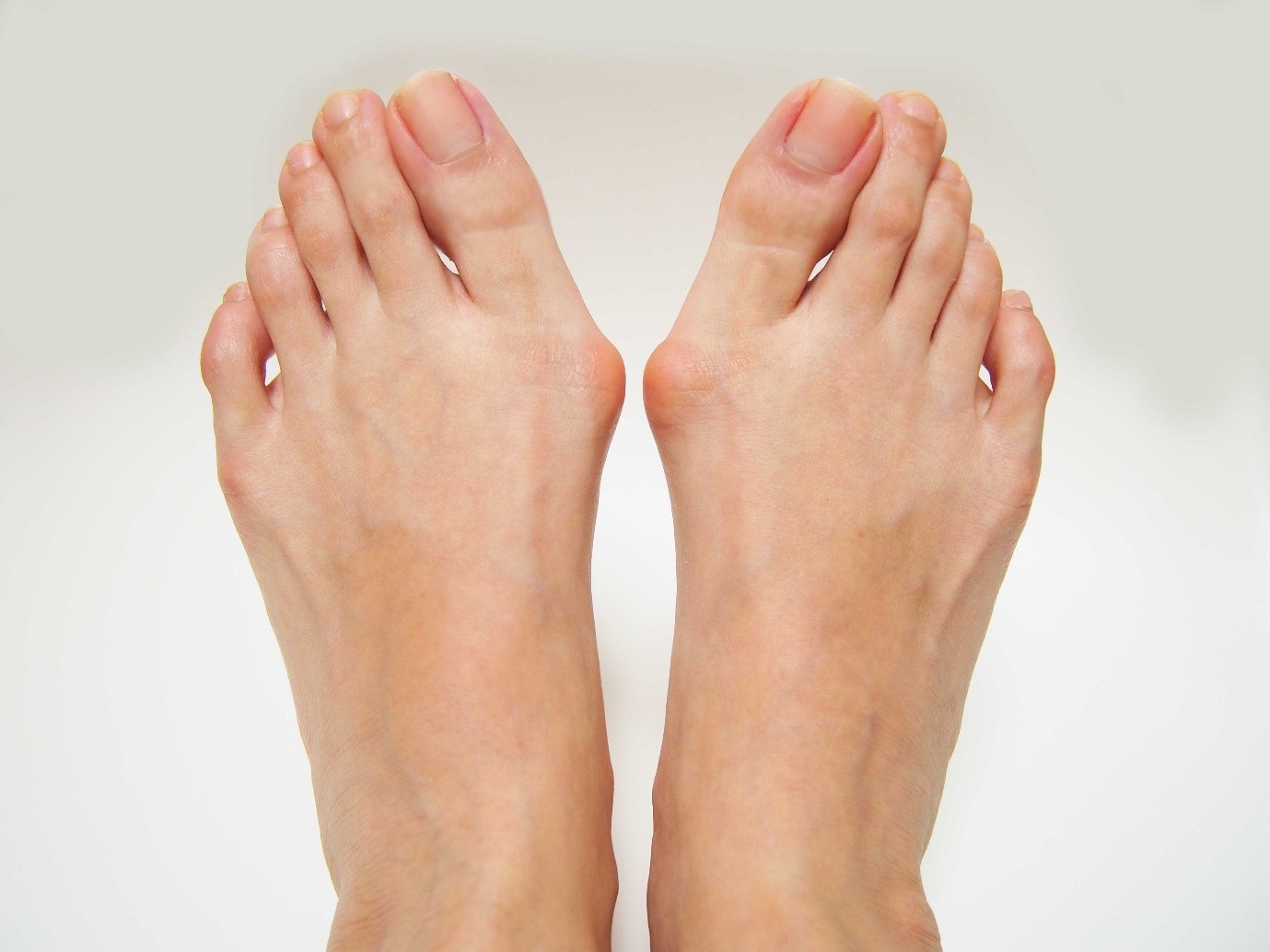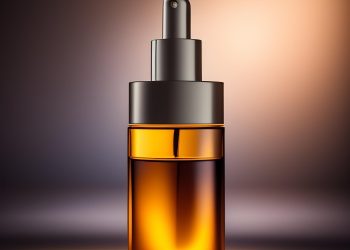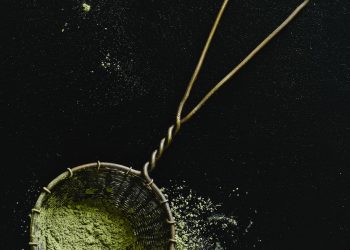A bunion can bring pain and discomfort and affect your daily routine.
However, there are some home remedies that you can try to get rid of bunions. The efficacy of these natural remedies for bunions is evidenced by research.
Bunion’s etymology is the Greek word “bunion,” which means turnip. It looks like a reddish lump on the feet. [1].
Bunion refers to a bony lump that develops at the big toe, forcing the joint to stick out. The skin over the bunion might become red and sore. Even smaller bunions can appear on the reciprocal of the little toe [2]. It is known as tailor’s bunion or bunionette. A tailor’s bunion may appear on the head of the metatarsal head (five long bones of the foot).
It’s pretty embarrassing to wear sandals with that large bump bulging out at the base of your big and small toe.
It can sometimes cause calluses, especially when the shoe rubs against the bunion [2].
Continue reading to learn how to get rid of hallux valgus or bunions, plus the causes, symptoms, and prevention tips of this condition.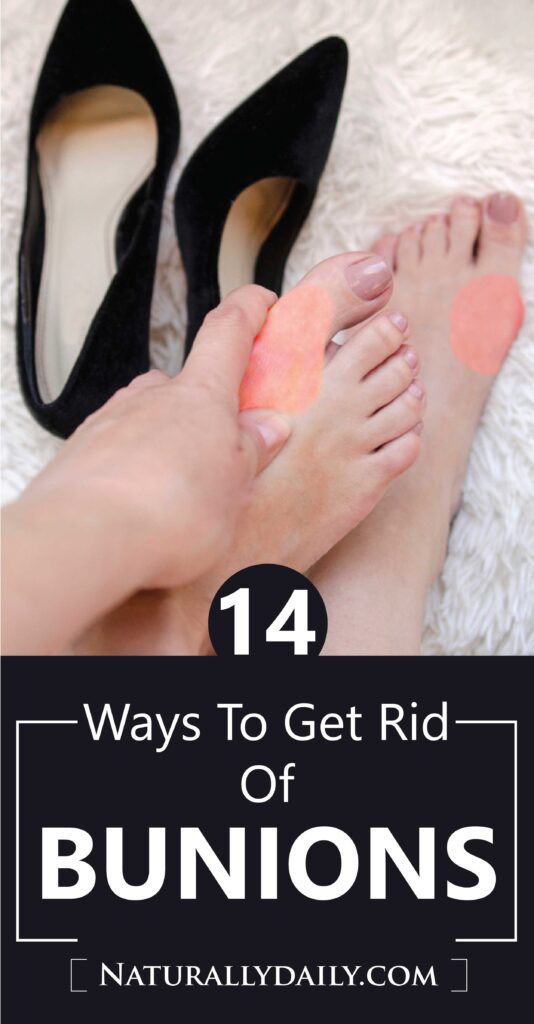
14 Home Remedies to Get Rid of Bunions
Some home remedies are highly effective for providing relief from bunions.
1. Ginger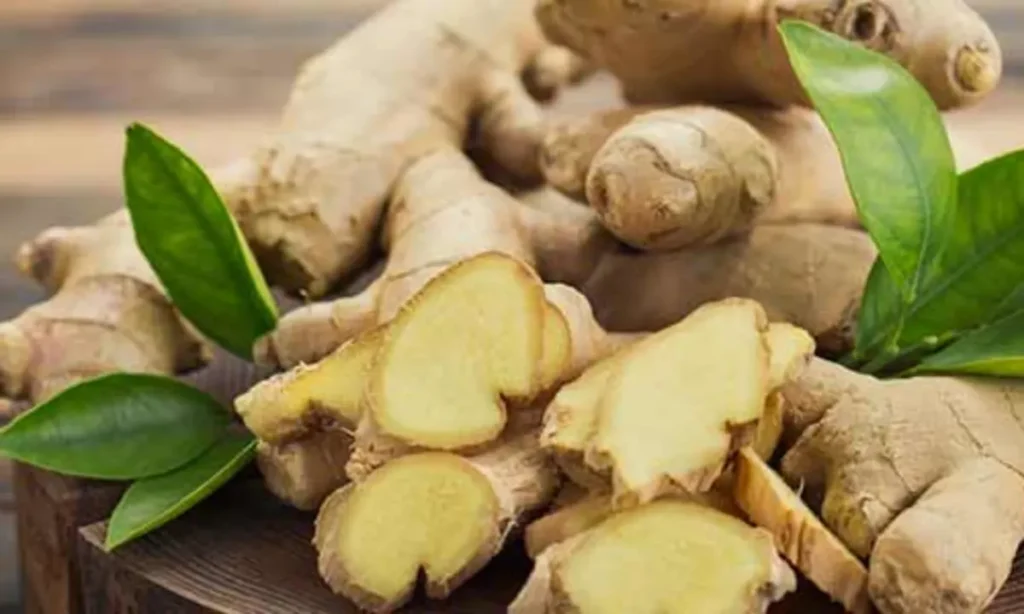
Dubbed a “natural gold,” ginger has been a flavoring agent and medicinal herb since ancient times [5].
It has been one of the preferred herbal remedies of many traditional healers.
Ginger usually has no side effects, even after long-term use.
Currently, scientific research has confirmed its analgesic and anti-inflammatory effects on the body. [6, 7, 8, 9]
It is also a proven antinociceptive, which can block pain signals in the brain [8].
These properties make it a suitable treatment for painful bunions.
Contributing to its mode of action is gingerol, the active chemical that abounds in ginger [6, 7].
Recommended directions for using ginger for bunions:
Include a piece of ginger root in your daily diet. Combine five drops of ginger oil and one teaspoon of olive oil. Use this oil mixture to massage the affected area. Do this for 15 minutes every day until the pain goes away.
RELATED: 20 Great Ways Of Using Ginger To Fight Your Acne
2. Turmeric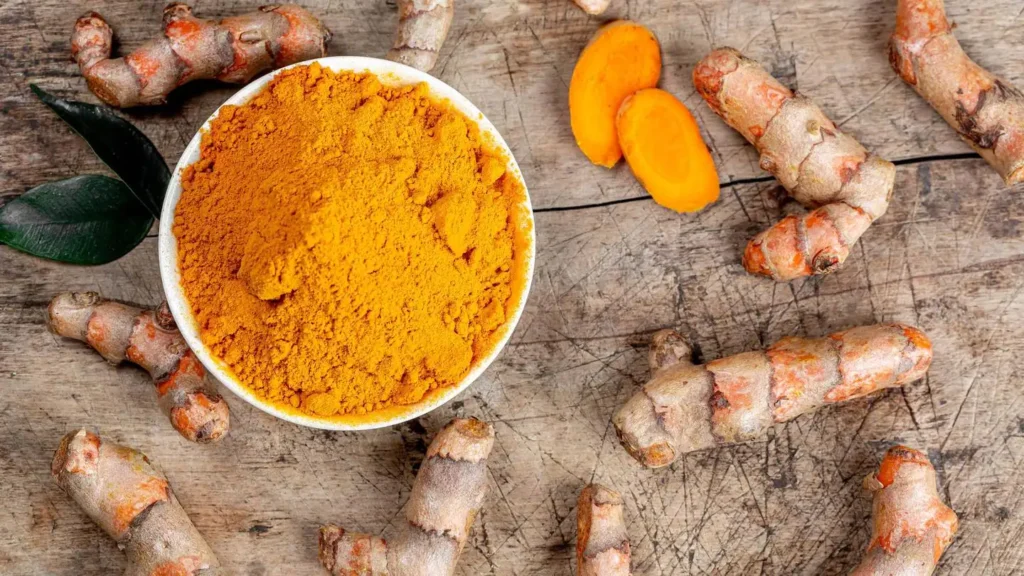
Turmeric is famous for its wide range of medicinal properties. You can take turmeric orally, apply it topically, or use it through inhalation [10].
Its active compound, curcumin, has been proven to have profound anti-inflammatory effects [10].
Doctors prescribe turmeric as a remedy for many inflammatory disorders, including arthritis.
A clinical trial conducted by American researchers in 2003 found that curcumin works by inhibiting the activities of molecules that trigger the body’s inflammatory process [10].
Another study at King Faisal University in Saudi Arabia reported that turmeric possesses anti-inflammatory and antioxidant properties. These benefit those suffering from arthritic conditions, including bunions [11].
This remedy is superior to indomethacin, a non-steroidal anti-inflammatory drug typically recommended for similar issues [11].
How to use turmeric for bunions pain:
Stir 1 teaspoon of turmeric in a glass of water. Drink the solution once a day for three to four weeks. Mix 2 drops of turmeric oil with a teaspoon of olive oil. Apply a thin layer to your foot. Massage gently for at least 10 minutes. Repeat procedure twice a day for one week.
3. Chamomile Tea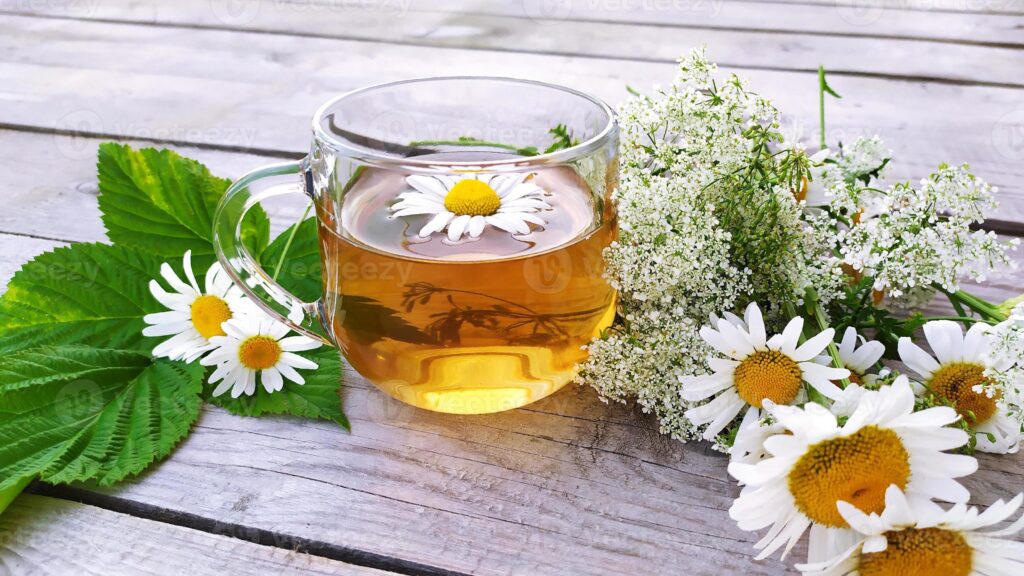
The Anglo Saxons believed Chamomile was “one of the nine sacred herbs” God gave humans [12].
Moreover, it’s probably because Chamomile can treat many ailments.
Today, people use chamomile tea to treat many health problems [12].
It is also considered a helpful remedy for those complaining of bunions.
Experts have analyzed Chamomile’s anti-inflammatory effects on rats. They obtained positive results [12].
Rats induced by pain felt better and demonstrated a reduced inflammation after being administered with chamomile extract [12].
That’s not all; it can also help relieve pain with its analgesic properties [13, 14].
How to use Chamomile to get rid of bunions at home:
Boil 1 teaspoon of dried Chamomile in a cup of water. Remove from heat. Drink the tea once a day for two to three weeks. Or apply chamomile tea bags to the swollen joint. Repeat every day until swelling subsides.
4. Calendula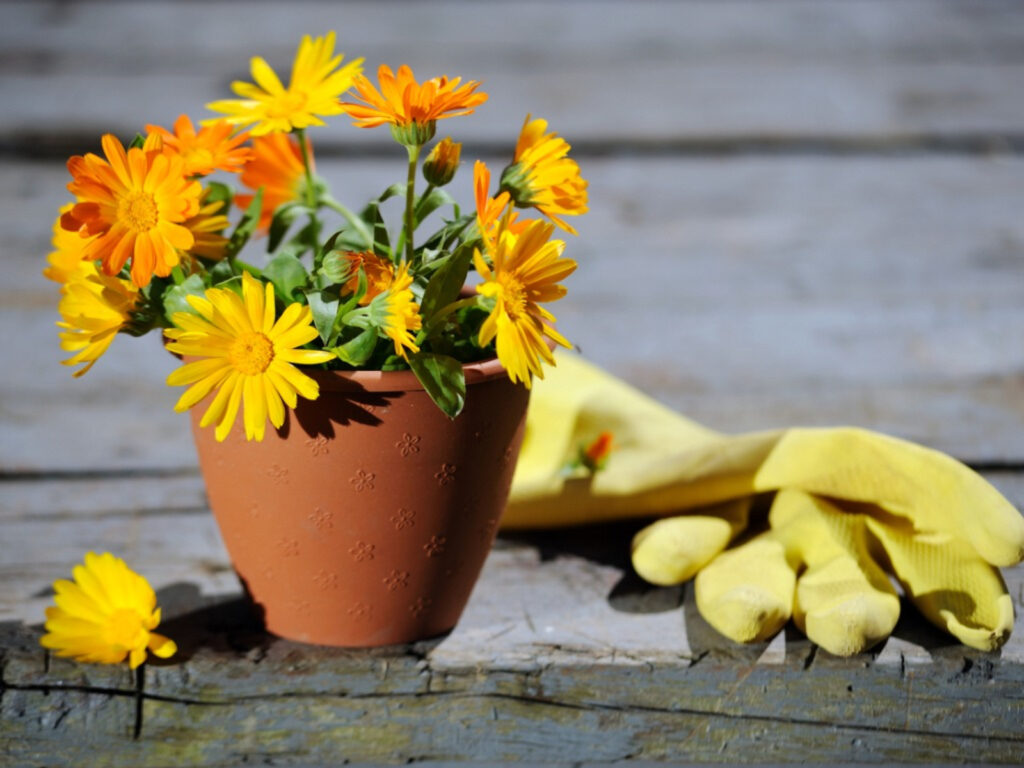
People in the United Kingdom have used Calendula or Marigold as a medicinal herb for more than 30 years [15].
Various studies proved its beneficial effects on conditions involving the foot, such as plantar verruca and bursa inflammation [15].
Many people also rely on this for alleviating bunions.
According to a report published in The Telegraph, calendula can reduce swelling by up to 25 percent. In addition, it can completely heal the pain in bunion patients within a three-month-long treatment.
It is a recommended alternative to surgery. Surgery is painful, takes a longer time to recover, and is very expensive.
If you’d like relief from bunions but would not want to resort to the surgical procedure, this is the alternative you should try.
Home remedy for bunions using calendula:
Combine 1 cup of calendula petals and 1 cup of olive oil in a pot. Warm on low heat for three hours. Pour the mixture into a glass jar. Apply a small amount of the affected part of the foot. Massage using long gentle strokes for five to 10 minutes. Repeat three times a day for one to two weeks.
RELATED: 12 Impressive Health Benefits of Calendula Oil
5. Epsom Salt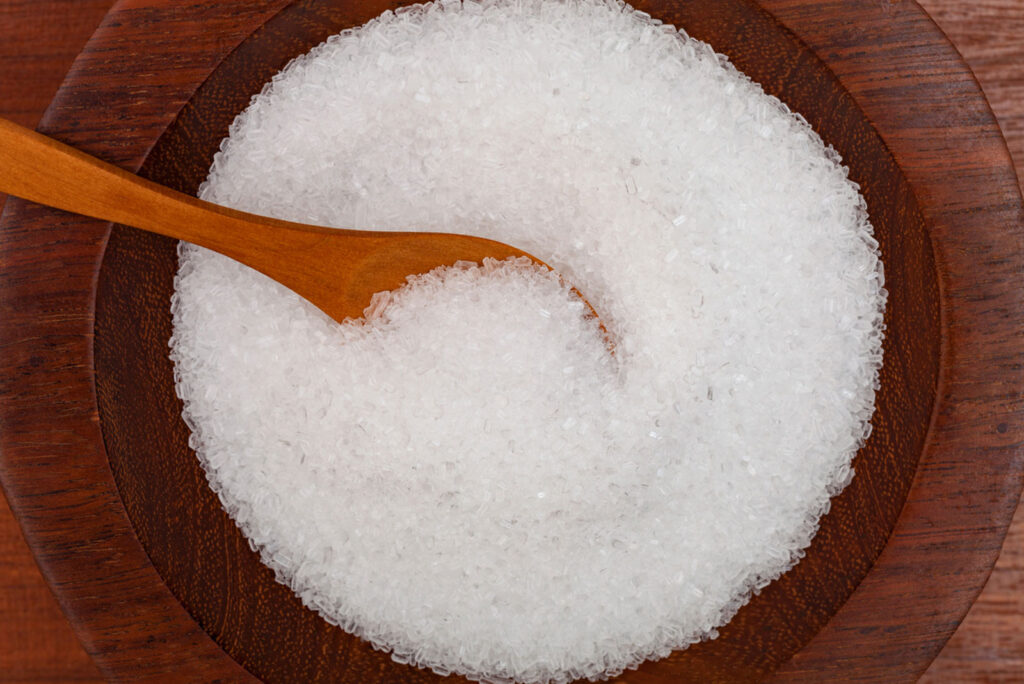
A popular folk remedy for countless ailments, Epsom salt, may also alleviate inflammation in the big toe.
Epsom salts, also known as magnesium sulfide, are compounds made of oxygen, magnesium, and sulfur.
It is a good source of magnesium. People have been using Epsom salt for treating minor ailments like muscle and joint paints or severe conditions such as cerebral palsy.
Alta Bates Medical Center in Berkeley, California, recommends soaking bunions in warm water and Epsom salts for pain and inflammation relief.
More studies should be done to validate the safety and efficacy of Epsom salt for this particular condition. But you can go ahead and try it for yourself.
After all, many who have used this remedy attest that it works and even recommend its use to others.
How to use Epsom salt to treat bunions naturally:
Pour 1/4 cup of Epsom salt into 1/2 bucket of warm water. Mix well. Soak your foot in the solution. Massage gently for 15 minutes. Repeat every day until the condition improves.
RELATED: Himalayan Salt Lamp Benefits: 19 Reasons to Buy One
6. Massage
Massage has always been beneficial in curbing countless health issues related to muscular pains and soreness.
Massage may also help relieve pain and tone down inflammation for those with bunions.
A study in the Journal of Bodywork and Movement Therapies reports massage is an excellent remedy for numerous pain problems [16].
When you receive a massage, you’ll feel so much better afterward.
It’s not only on the physical level, but you’ll also feel some improvement in your mood and emotional state.
This is great since painful conditions such as bunions can make you feel stressed and moody.
Note that massage works even more effective when combined with aromatherapy [17, 18].
Recommended directions for using lavender oil for bunions:
Warm One teaspoon of mustard oil in a pan. Remove from heat. Let it cool a little. Add 2 drops of lavender oil. Apply oil blend to the joint and massage gently for 15 minutes. Repeat four times a day. Do this every day until the inflammation is reduced.
7. Olive Oil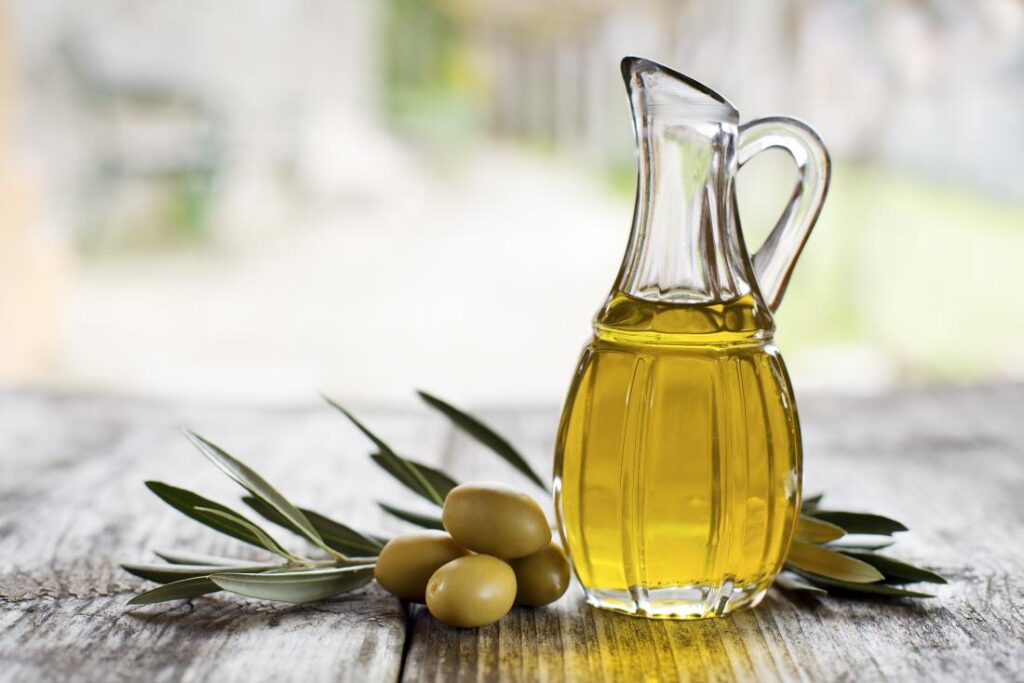
Some health experts recommend using olive oil for rheumatoid arthritis and other similar arthritic conditions [19, 20].
These findings show olive oil’s efficacy in reducing pain, stiffness, and fatigue in the joints. Experts suggest it may also be a potential solution for bunions [19, 20].
Contributing to the anti-inflammatory mechanisms of olive oil are its phenolic compounds, such as tyrosol and caffeic acid [21].
Oleocanthal, another potent phenol in olive oil, also plays a vital role in alleviating chronic inflammatory diseases, including those related to joints [22].
Apart from using it to massage affected body parts, you can also consume it orally.
It may also work to improve your health from within due to its nutrients and antioxidants.
Use it in cooking, or drizzle olive oil on your salad or vegetables.
How to use olive oil to shrink bunions naturally:
Warm one teaspoon of olive oil in a pan. Smear olive oil on the affected joint. Massage gently for 15 to 20 minutes. Repeat three times a day for two to three weeks. After that, make it a habit to include more olive oil in your diet.
RELATED: Olive Oil on Face: 6 Benefits + How to Use It
8. Red Pepper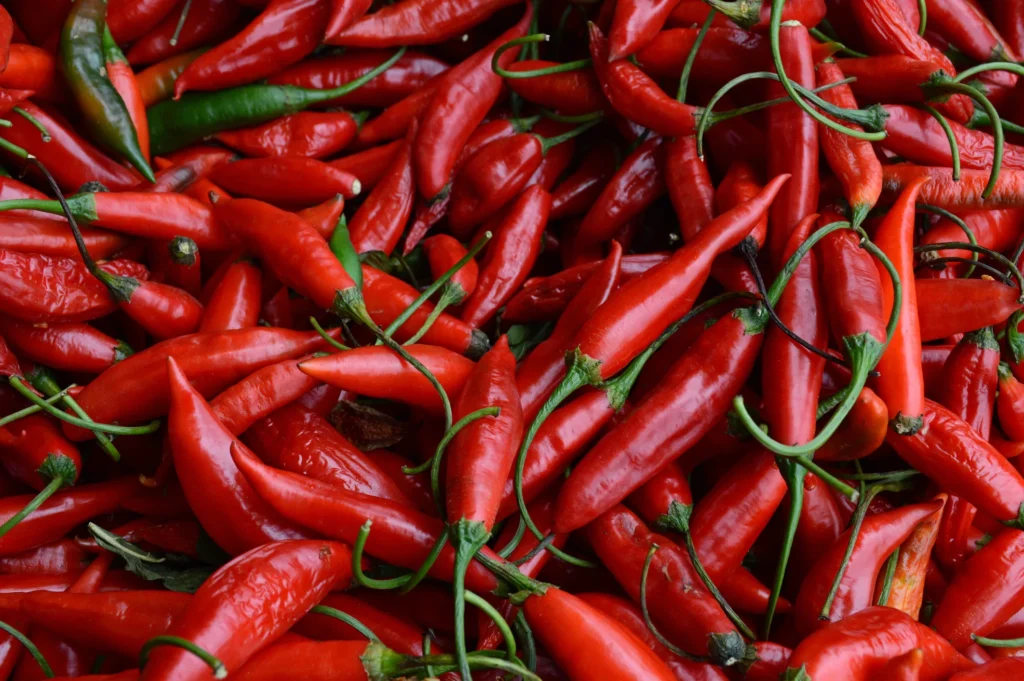
Red pepper is on the list of the five most effective chemopreventive foods [23].
A 2006 study reports its anti-cancer and anti-inflammatory properties [23].
Reducing inflammation is also a key component in any bunion treatment.
With its proven anti-inflammatory mechanisms, Red pepper is a practical solution for this joint problem [24, 25].
Yes, topical application of something as spicy as red pepper may cause stinging pain.
However, this gets more tolerable in time.
If you’re not comfortable with the stinging sensation it causes, you can reduce the amount of red pepper in the remedy and increase it gradually once you get used to it.
How to use red pepper as a natural cure for bunions:
Combine one teaspoon of chopped red pepper and 3 tablespoons of olive oil. Massage sore joint with this mixture. Do this remedy for 15 minutes once a day for one week.
9. Castor Oil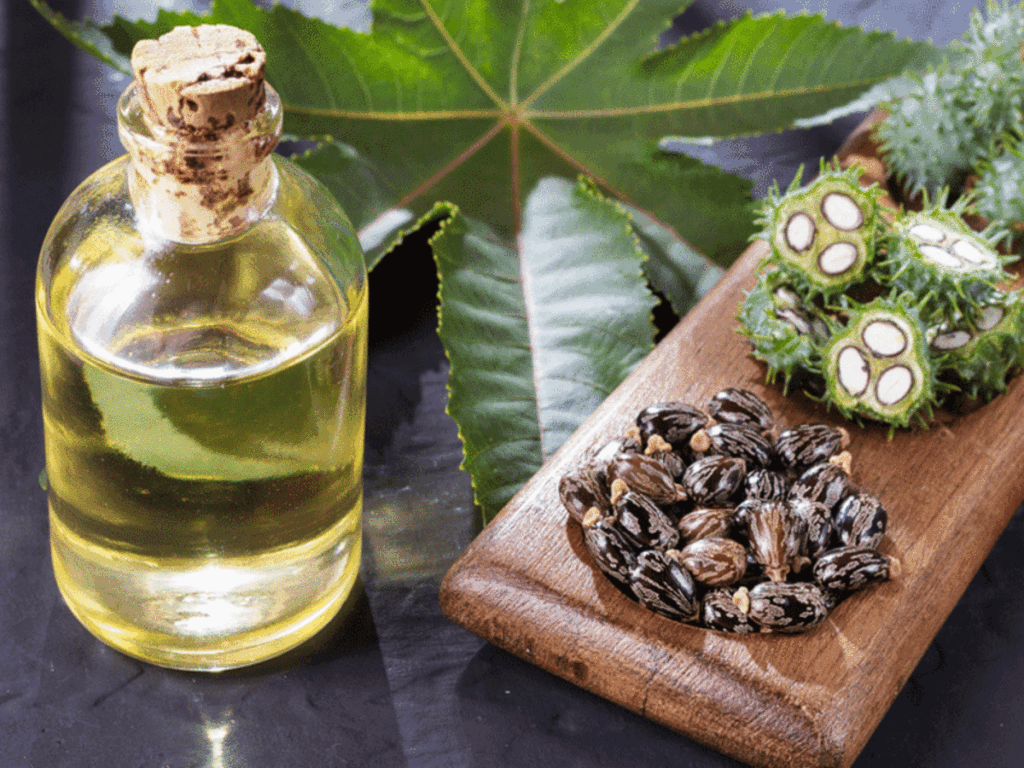
Castor is one of the 7,500 species belonging to the plant family of Euphorbiaceae. It has the highest medicinal value that may help you achieve a “disease-free healthy life” [26].
This plant has antifungal, laxative, antioxidant, and antibacterial properties [26].
Indian researchers also confirm that castor is a potent anti-inflammatory agent. It may reduce acute and chronic inflammation with its alkaloids, tannins, and flavonoids [27].
These active compounds prevent the molecules and enzymes that trigger the body’s inflammatory response.
It can also relieve the pain caused by bunions with its antinociceptive properties [28].
This works by preventing pain signals from getting to your brain.
This way, even if you’re in pain, you will not know you are because this remedy has blocked the signals that trigger your brain.
How to use castor oil to stop bunions from progressing:
Put 1/4 cup of castor oil in a pan over low heat. Warm it for a few minutes. Soak a cloth in the oil. Apply it onto the bunions. Wrap the foot in a dry cloth. Follow the remedy twice a day for three to four weeks.
10. Ice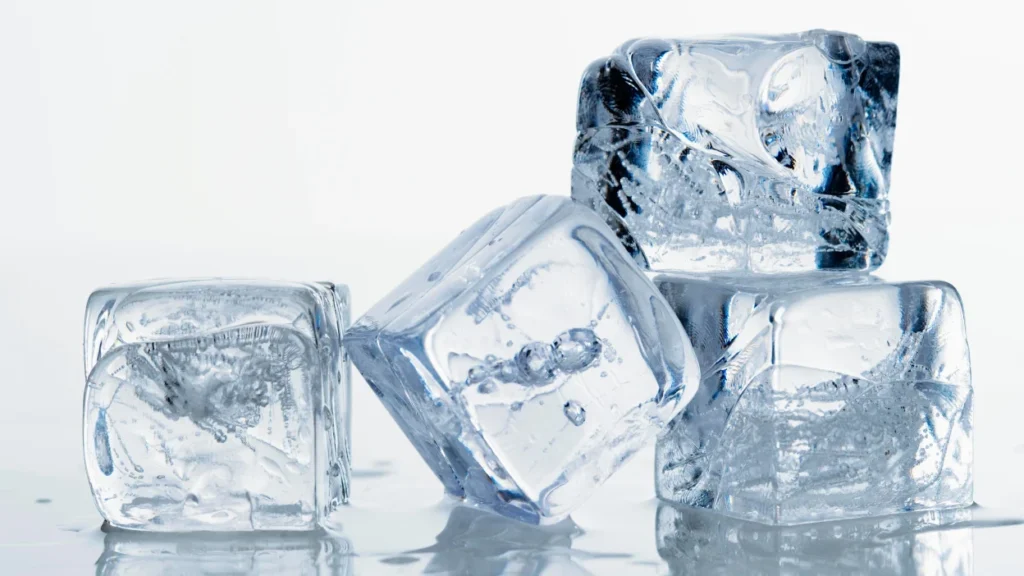
Cold therapy has long been used for toning down inflammation such as bunions.
It is one of the “conservative treatment measures” that should be immediately used at the first sign of the problem [29].
A 2005 study published in the Clinical Chiropractic Journal stated that ice treatment and other conservative chiropractic measures significantly reduced the pain and discomfort caused by bunions [30].
Because this technique is straightforward, there’s no excuse not to try it.
All you need is cold water or a bowl of ice cubes that you probably have in your freezer.
Recommended directions for using ice for bunions:
Wrap ice cubes with a cotton cloth. Gently press on bunions for five to 10 minutes. Use this remedy once or twice a day as needed.
11. Exercise
When you’re in pain, engaging in any form of physical activity may be challenging.
Most likely, you’re going to avoid movements so as not to feel any pain.
Pain should not prevent you from exercising.
Those who suffer from bunions should still exercise to strengthen their muscles.
This, in turn, will help alleviate the condition and improve mobility.
A 2016 Journal of Orthopedic & Sports Physical Therapy study confirmed that foot strengthening exercises could benefit people who complain of bunions [31].
Just make sure that you follow the recommended procedure. Strenuous exercises may aggravate the inflammation.
Recommended Directions:
Sit down on a chair. Put a tennis ball underneath your foot. Roll the ball using your foot.
Do this exercise technique for 10 to 15 minutes a day. After this, stand up straight and stretch your toes for 10 to 15 seconds. Then, curl them under for another 10 to 15 seconds. Repeat this for 10 to 15 minutes. Do these exercises twice a day until pain and inflammation improve.
12. Lavender Oil
Lavender oil is most famous for its ability to induce relaxation.
It’s often employed in relaxation techniques such as massage therapy and aromatherapy.
Topical massage with lavender oil may help by toning down the pain and discomfort of bunions.
It may also soothe your senses and make you feel less stressed.
The active compounds in lavender include linalyl acetate and linalool [33].
Researchers have confirmed that these compounds have analgesic and anti-inflammatory values [32, 33].
These compounds may cause a significant reduction in edema and pain in animals.
These findings convince researchers that lavender oil can benefit many types of pain and inflammation-related disorders.
Lavender also has no harmful side effects as long as it is not used in pure and undiluted form.
How to use lavender oil for bunions pain and inflammation:
Pour 3 drops of lavender oil into a teaspoon of almond oil. Mix well. Apply on your bunions. Massage gently for 10 to 15 minutes. Wrap a cloth with lavender oil around your foot. Let it stay for at least half a day. Use this remedy every day until the condition improves.
RELATED: 11 Health Benefits of Lavender Oil That You Should Know
13. Bay Leaves
Aromatic bay leaves are a popular spice in South Asian countries. The leaves are used in various dishes for their aroma and flavor.
Bay leaves have incredible medical values because of their chemical components. The leaves contain linalool, eucalyptol, geraniol, terpenes, terpineol, lauric acid, and many other active ingredients. [35]
Bay leaves are a simple home remedy for bunions’ pain and swellings. Let’s get to know how to use bay leaves for bunions relief.
How to use bay leaves to shrink bunions naturally:
Crush 5-7 bay leaves and boil them on 300 ml water for 5-10 minutes. Drink this tea every morning and at intervals throughout the day. As you begin this treatment, you may feel the urge to urinate frequently during the day. The leaves will help dissolve the salt in your body and thus lower the pain and swelling of the bunions. Continue this treatment for two months.
It would help to soak your feet in baking soda water every night while consuming bay leaves tea. Finally, Pat dry your feet and wear cotton socks. This will make the treatment work faster.
Ensure you drink fresh bay leaves tea every time you repeat the treatment.
14. Aspirin
It’s not as shocking as it sounds! Using aspirin may help to get rid of bunions.
Aspirin is a non-steroidal, anti-inflammatory drug that decreases the stinging pain from an inflamed area.
A study was conducted in 2009 to see the effect of aspirin on healthy male volunteers [34].
The study found that low doses of aspirin could inhibit innate immune-mediated responses. In addition, aspirin could treat areas with inflammation, thus proving highly beneficial in treating bunions [34].
Moreover, aspirin helps to keep the affected area soft and prevents calluses.
How to use aspirin tablets topically to reduce bunions pain:
In a bucket full of lukewarm water, add 2-3 aspirin tablets. Soak the foot in this mixture until the water turns cold, and then dry the foot and massage it with olive oil. Repeat this process twice a day until the pain is reduced.
However, remember to do a patch test at first, as sometimes aspirin may induce allergies or skin irritation.
Cause of Bunions or Hallux Valgus
The exact cause of a bunion is unknown. However, several factors lead to its development of it, such as:
- Foot injuries
- Inherited foot type
- Deformities present at birth (congenital)
Lifestyle habits mainly contribute to bunions. For example, wearing too-tight fitting or even narrow shoes can contribute to the formation of a bunion.
Bunions can also develop as a result of stress on your foot. In addition, an inherited structural defect or a medical condition, such as rheumatoid arthritis, can form a bunion [2].
Joint enlargement, misalignment, and deformity often occur with inflammation of the tissues [3].
This condition causes various unpleasant symptoms such as soreness and swelling in the big toe joint, thickening skin, corns and calluses, difficulty moving the toe, and persistent pain [4].
Complications
Most of the time, they don’t always create life-threatening complications. However, permanent bunions can be surgically corrected. The possible complications associated with bunions include:
- Bursitis – this condition mainly occurs when the small fluid-like pads that cover the bones, muscles, and tendons near the joints become inflamed.
- Hammertoe- in this case, an abnormal bending occurs in the middle joint of a toe, causing pain and pressure.
- Metatarsalgia –This condition causes pain and inflammation in the ball of your foot
Honestly, that depends on the condition of the bunion. Usually, joint injuries and diseases are first examined thoroughly by a physician. If the doctor finds the problem severe after diagnosis, they will suggest surgery. [36]
The doctor may recommend wearing a bunion splint or Hallux Valgus corrector brace pad. In addition, the bunion relief products such as a toe straightener may give you relief from the pain.
You may purchase a bunion splint yourself online here.
However, if it is not that problematic, you can treat the condition using simple home remedies for bunions.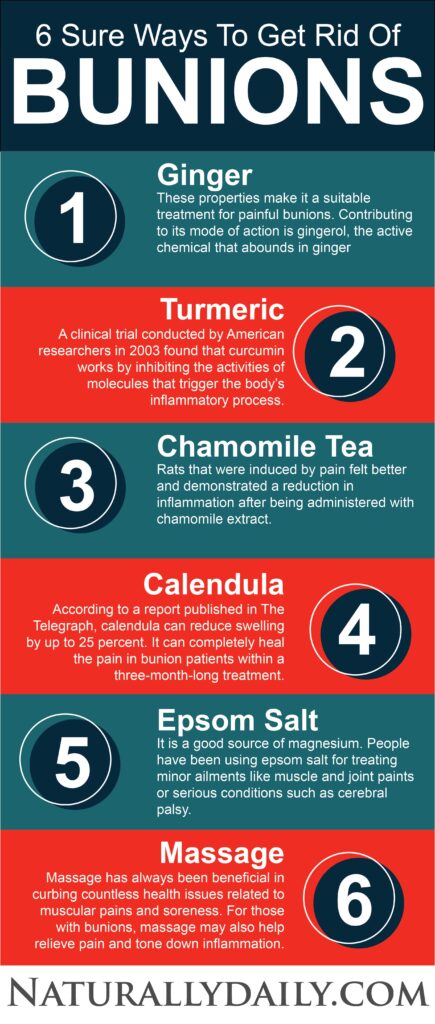
How to Prevent Bunions?
As wearing shoes can lead to bunions, choosing them carefully is important.
It’s best to wear shoes with a wide toe box, so there’s enough space between the tip of your longest toe and the end of the shoe.
Also, your shoes should not squeeze or press any foot part. These precautions, at times, are enough to prevent bunions. [37]
Some Q&A About Bunion
What is a bunion?
A bunion is a complicated problem in the foot. It is more complex than a simple bump. When a person has a bunion, the big toe is angled towards the other toes. The name of this condition is hallux valgus. Bunion treatment is done using simple home remedies given above.
Is bunion more prevalent in women than in men?
Yes. A bunion is more prevalent in women when compared to men. It happens because of the prolonged wearing of unsuitable footwear.
Is there any complication that may arise after the surgery?
It is very uncommon for a complication to arise after bunion surgery. However, sometimes complications may occur, and it is an occasional instance. The type of complication that can occur includes:
- an infection
- phlebitis is an inflammation of the vein
- excessive swelling or bleeding from the operated area
- blood clot formation
- any damage to blood vessels and nerves
Does bunion also affect children?
Yes. A bunion is sometimes diagnosed in children as well. These can happen to children as young as three to four years old. It is because their bones are growing and may start to become deformed due to improper footwear. Usually, surgery is suggested for children after they are more than twelve years old. It is because then, their foot stops growing.
In what age group does bunion occurs more often?
Bunion affects people who are elderly. So, a bunion is more common in adults over sixty-five.
Is bunion a genetic condition?
Not really. Only about two percent of people who suffer from bunion get it because of their genes.
Bottom Line
Joint pains are harassing and distressing at the same time.
Plus, if it is on foot, then life gets even worse.
A bunion is one of the most painful ailments involving the feet.
Conventionally, surgery is suggested as the appropriate option to treat bunions. However, that is not always the case. You may get rid of bunions without surgery using only natural home remedies.
Usually, these home remedies for a bunion may reduce the symptoms to a great extent.
Surgery is only suggested when the condition is terrible.
